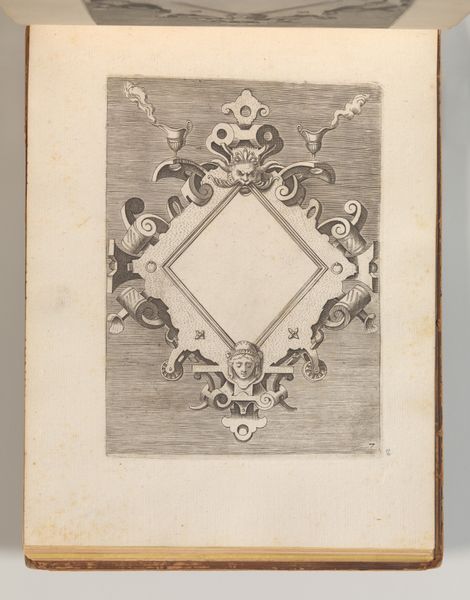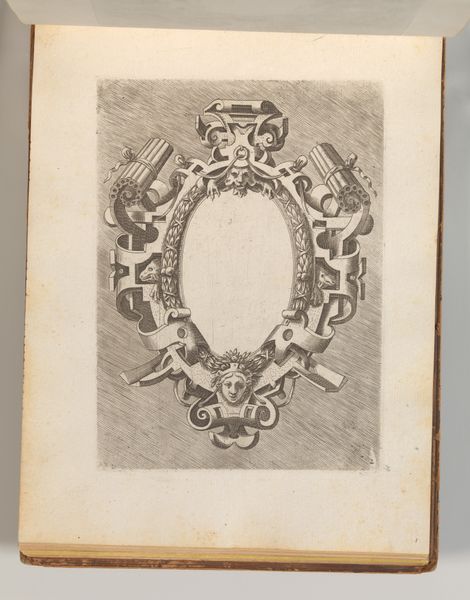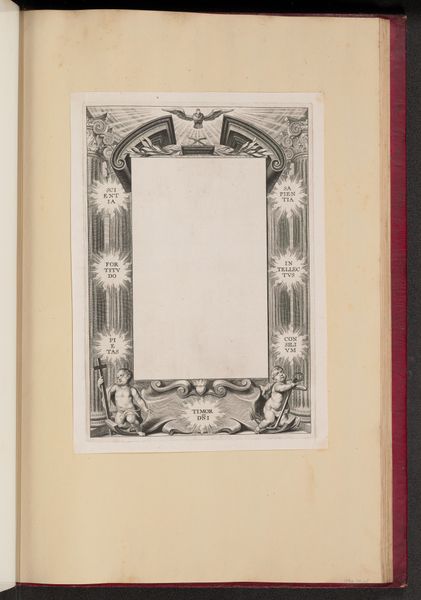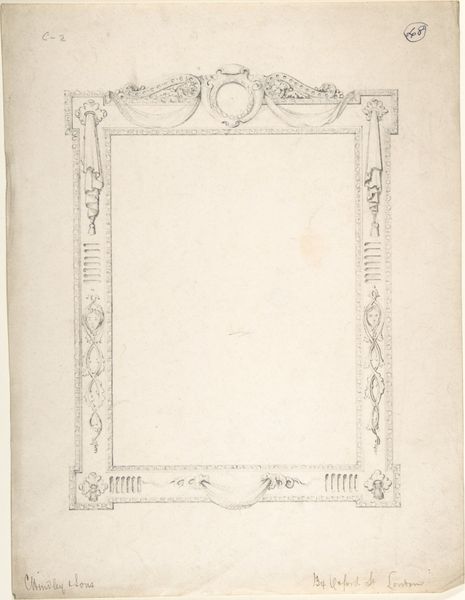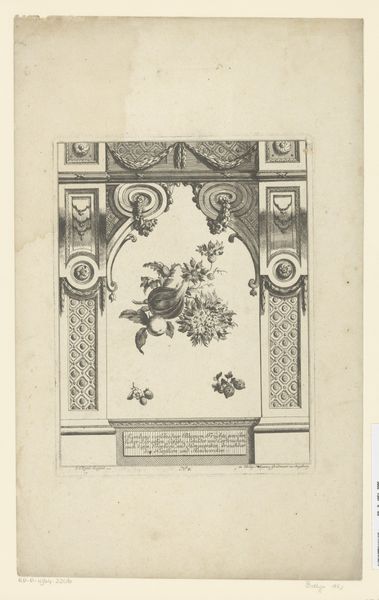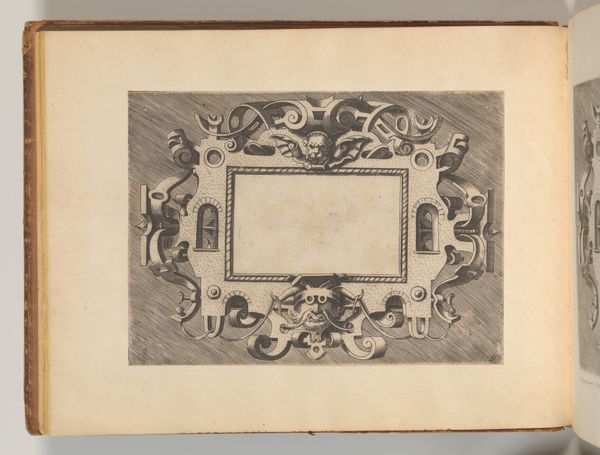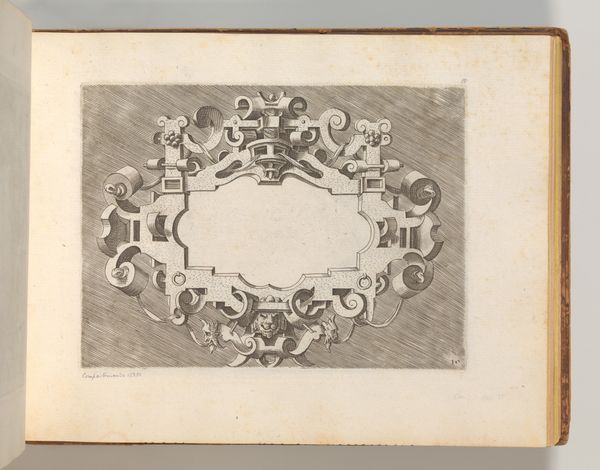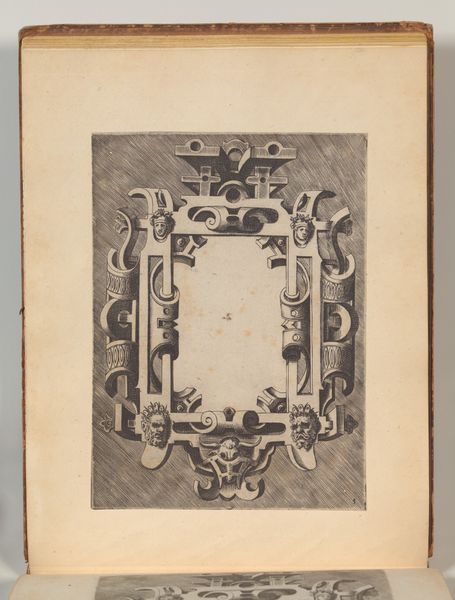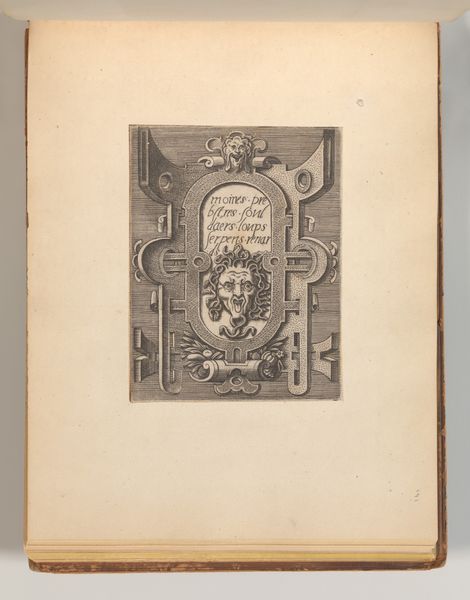
Targhe ed altri ornati di varie e capricciose invenzioni (Cartouches and other ornaments of various and capricious invention, page 27) 1773
0:00
0:00
Dimensions: Sheet: 7 7/8 × 10 5/16 in. (20 × 26.2 cm) Plate: 5 1/8 × 11 13/16 in. (13 × 30 cm) Overall: 8 1/4 × 10 5/8 in. (21 × 27 cm)
Copyright: Public Domain
Curator: We're looking at a print called "Targhe ed altri ornati di varie e capricciose invenzioni," or "Cartouches and other ornaments of various and capricious invention, page 27," created in 1773. It is currently located at the Metropolitan Museum of Art. Editor: The overall impression is one of contained exuberance. Despite the static medium, there's a feeling of baroque movement. It is dominated by that central frame, though the field of linear engraving also pulls the eye. Curator: Indeed. Let’s focus on that frame. Note how the geometric structure plays with curvilinear elements, juxtaposing hard edges against ornate flourishes. The balanced asymmetry introduces dynamic tension within its visual logic. Editor: Absolutely! That female mask at the bottom is striking. Her expression, serene yet slightly melancholic, feels deliberately placed as an anchor, a symbol perhaps of classical ideals grounding the otherwise fanciful design. Is it common to invoke antiquity in these prints? Curator: Precisely. Baroque art constantly appropriates and reinterprets classical forms. Observe how those volutes and scrolling motifs, alongside stylized pilasters, exemplify baroque design principles—layering and theatricality above all else. The central void serves as a formal pause. Editor: It's tempting to see it as a mirror, reflecting our own aspirations to cultivate, contain, or frame beauty. The print also reminds me of architectural facades, scaled down and repurposed. Was it created for architectural draftsmen, as some kind of model? Curator: The print was indeed designed as a model or a template, likely for artisans engaged in decorative arts. It offers a vision of how spaces can be ornamented and defined by such elements. Note how its precise engravings articulate formal concerns around balance, tension, and proportion. Editor: So beyond the pure visual design, one can see how social functions and meanings also are at work here. In this way, this “capricious invention” hints at the larger cultural values circulating back in the 18th century. Curator: Yes. What this Baroque work reveals most clearly is the visual system in which symbolic components create structured relations and the aesthetic logic of the piece. Editor: It has revealed layers within this frame beyond merely decorative flair. Curator: Likewise, the artwork is one piece in a fascinating field of relations.
Comments
No comments
Be the first to comment and join the conversation on the ultimate creative platform.


